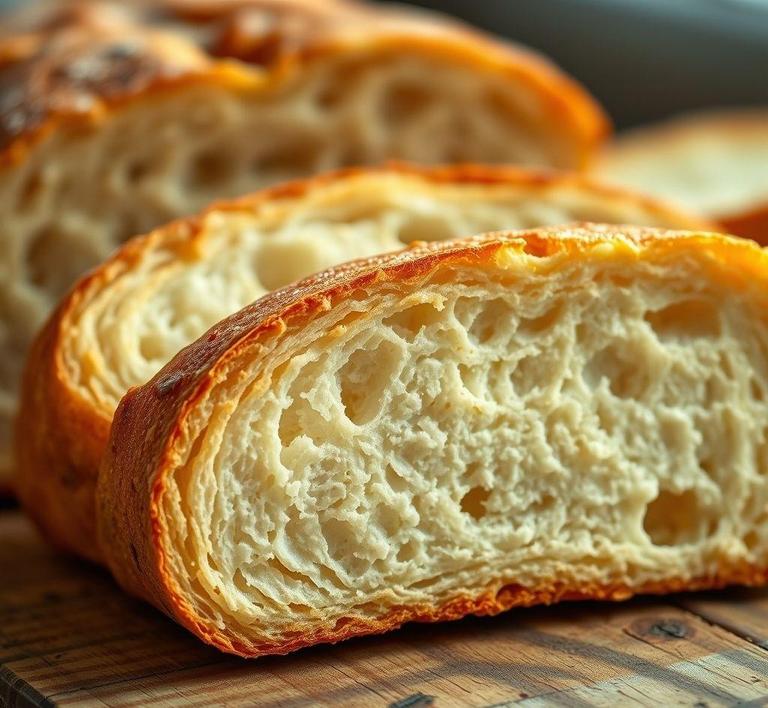If you’ve ever found yourself with a loaf of sliced bread that’s about to go stale, you might wonder if you can refreeze it to keep it fresh for longer. The good news is, you absolutely can! Refreezing sliced bread is a handy trick to extend its shelf life and prevent waste, but there are a few tips and tricks to do it right. In this guide, we’ll walk you through the best ways to store, thaw, and enjoy your bread after refreezing, ensuring that every slice stays delicious and fresh for as long as possible.
Can You Refreeze Sliced Bread?

The question of whether you can refreeze sliced bread is a common one, especially among those who like to buy bread in bulk or want to minimize food waste. The short answer is: yes, you can refreeze sliced bread, but with some important caveats related to safety and quality.
Bread, unlike raw meat or seafood, is generally less prone to bacterial contamination that would be exacerbated by freezing and thawing cycles. However, the process of freezing bread is primarily about preserving freshness and texture rather than preventing spoilage. When bread is frozen, the water molecules inside it form ice crystals, which can damage the bread’s cellular structure. This damage, while minimal in a single freeze-thaw cycle, can compound if the bread is frozen multiple times.
If the bread was thawed properly-meaning it was kept cold and did not sit at room temperature for extended periods-it is generally safe to refreeze it. However, if the bread has been left out for too long or shows any signs of mold or spoilage, refreezing is not recommended as it can pose health risks.
In short, the safety of refreezing sliced bread depends largely on how the bread was handled during and after its first thawing. But beyond safety, the impact on bread quality is the key consideration for most people.
How To Refreeze Sliced Bread?
If you decide to refreeze sliced bread, following the right procedure is crucial to preserve its quality and safety as much as possible:
- Inspect the Bread Thoroughly: Before refreezing, check for any signs of mold, unusual odor, or dryness. If the bread appears stale or compromised, it’s better to discard it.
- Cool Before Refreezing: If the bread was thawed in the refrigerator, it’s already at a safe temperature. Bread thawed at room temperature should ideally be cooled down quickly in the fridge to slow bacterial growth before refreezing.
- Wrap Tightly: Moisture loss and freezer burn are your enemies. Use airtight packaging like resealable plastic bags, freezer wrap, or vacuum sealers to protect the bread. Wrapping each slice individually can help minimize clumping and allow you to thaw only what you need later.
- Label with Dates: Always label the packaging with the original freeze date and the refreeze date. This will help you keep track of how long the bread has been in the freezer and avoid prolonged storage which can further degrade quality.
- Refreeze Promptly: Don’t let the bread sit thawed for more than a day or two before refreezing. The fresher it is when refrozen, the better the texture and taste will be after thawing again.
- Thaw Gently: When you’re ready to use the refrozen bread, thaw it in the refrigerator or toast slices directly from the freezer to help restore some of its texture and flavor.
Quality Impact
While refreezing sliced bread is possible and generally safe, it inevitably affects the bread’s quality, particularly its texture and flavor:
- Texture Degradation: Bread’s cellular structure is delicate. Each freeze-thaw cycle causes ice crystals to expand and rupture the tiny air pockets inside the crumb. This can result in a drier, crumbly texture or a slightly chewy, tough bite. The crust might lose its crispness, turning leathery or soft.
- Moisture Loss: Freezing and refreezing promotes moisture loss. Even well-wrapped bread can suffer from freezer burn, which leaves the bread dry and flavorless in spots.
- Flavor Changes: Fresh bread has subtle flavors that can fade or become muted after multiple freezing cycles. Stale or freezer-burned bread may develop off-flavors or a stale smell.
- Appearance: Refrozen bread may develop slight discoloration or frost on the surface if not sealed properly, which doesn’t affect safety but can be visually unappealing.
However, certain types of bread respond better to refreezing. Denser breads like rye or whole wheat tend to hold up better than delicate, airy white breads. Breads with added fats, like brioche or challah, may retain moisture better but can still suffer texture changes.
To mitigate these effects, try to freeze bread only once when possible, and consume refrozen bread promptly. Toasting or using the bread in cooked dishes like French toast, stuffing, or bread pudding can also help mask minor quality losses.
Refreezing sliced bread is both possible and safe, provided you follow careful handling and storage practices. It offers a practical way to reduce food waste and extend the shelf life of your bread, especially if you’ve thawed more than you could consume at once. However, each freeze-thaw cycle inevitably takes a toll on bread’s texture, moisture content, and flavor, so it’s best used as a last resort rather than a routine method.
For optimal quality, aim to freeze bread in manageable portions from the start, thaw only what you need, and avoid refreezing whenever possible. But if you do need to refreeze, make sure to inspect the bread for freshness, wrap it tightly, and refreeze it quickly to preserve as much of its original deliciousness as you can.
In essence, refreezing sliced bread is a balance between practicality and quality – a handy kitchen hack when done right, but one that requires mindful storage and realistic expectations about the end result.
Is It Safe To Refreeze Sliced Bread?
When it comes to frozen foods, refreezing is often a topic filled with caution and curiosity. Sliced bread, a pantry staple, is no exception. The good news is that, generally, refreezing sliced bread is safe, but there are important nuances to understand.
Bread is a low-moisture food, meaning it does not harbor bacteria as readily as high-moisture items like meat or dairy. This reduces the risk of foodborne illnesses after thawing and refreezing. However, safety is only one side of the coin-quality is the other. Every time bread is frozen, thawed, and then refrozen, it undergoes moisture loss and structural changes. These changes can affect texture, flavor, and overall freshness.
The key to safely refreezing bread is controlling how long the bread has been out of the freezer and under what conditions. Bread that has been thawed but kept at room temperature for extended periods can develop mold or become stale, making refreezing inadvisable. If the bread was thawed in the refrigerator and used within a day or two, refreezing is usually safe and helps reduce waste.
In essence, refreezing sliced bread is safe if it hasn’t been left out at unsafe temperatures and shows no signs of spoilage. Still, expect some quality degradation, especially in terms of crumb softness and crust crispness.
Signs That Sliced Bread Should Not Be Refrozen
Knowing when not to refreeze sliced bread is crucial to maintaining both your health and a pleasant eating experience. Here are the red flags that indicate it’s best to avoid putting that bread back into the freezer:
- Visible Mold Growth: Mold spores spread quickly on bread. If you see any green, white, or black spots, it’s a clear sign the bread is spoiled. Refreezing won’t kill mold; it will just preserve it.
- Off or Sour Smell: Fresh bread has a mild, pleasant aroma. If the bread smells sour, musty, or otherwise off, it means bacteria or mold growth has begun, and it should be discarded.
- Excessive Moisture or Sliminess: Bread that feels damp, sticky, or slimy is at risk of microbial growth. This often happens if thawed bread was stored improperly or exposed to humidity.
- Extended Time at Room Temperature: Bread left out on the counter for more than 2 hours (or 1 hour in hot environments above 90°F) is prone to bacterial contamination. Such bread should not be refrozen.
- Texture Changes: While some staleness is normal after thawing, bread that has become excessively dry, hard, or crumbly might lose its quality if refrozen and could result in an unpleasant eating experience.
When any of these signs are present, it’s safer to discard the bread rather than risk foodborne illness or poor taste.
Common Refreezing Mistakes
Refreezing sliced bread might seem simple, but many people make mistakes that compromise either safety or quality:
- Refreezing Bread Left Out Too Long: As mentioned, bacteria multiply rapidly at room temperature. Leaving bread out overnight and then refreezing it is a common error that can lead to spoilage.
- Not Using Airtight Packaging: Bread absorbs odors and moisture from the freezer. If it isn’t tightly wrapped in plastic wrap, freezer bags, or sealed containers, it can develop freezer burn, becoming dry and tasteless.
- Repeated Freeze-Thaw Cycles: Each freeze-thaw cycle degrades bread’s texture. Refreezing multiple times leads to a crumbly, dry product, even if safe to eat.
- Refreezing Without Portioning: Trying to refreeze an entire loaf after thawing a few slices can increase exposure to air and moisture. It’s better to slice and freeze in portions to avoid this.
- Ignoring the Original Freezing Duration: Bread that was frozen for an extended period before thawing might already be past its prime. Refreezing this bread won’t improve quality and can accelerate staleness.
Avoiding these mistakes helps maintain both safety and freshness.
Tips And Tricks
Maximize the safety and quality of your frozen sliced bread with these handy tips:
- Freeze Bread Fresh: Freeze bread as soon as possible after purchase to lock in freshness. If possible, slice before freezing for easier portioning.
- Use Proper Packaging: Wrap slices tightly in plastic wrap or foil, then place in a ziplock freezer bag. Remove as much air as possible to prevent freezer burn.
- Label and Date: Always label bread packages with the freezing date. Consume within 3 months for optimal quality.
- Thaw Properly: Thaw bread in the refrigerator or at room temperature wrapped in a cloth to prevent condensation from making it soggy.
- Use Bread Soon After Thawing: Ideally, use thawed bread within 1-2 days. If you don’t use it all, refreeze only if no signs of spoilage are present.
- Toast After Thawing: Toasting can revive some of the bread’s texture and flavor lost during freezing.
- Consider Freezer-Safe Bread Storage: If you freeze bread regularly, invest in reusable silicone bags or vacuum sealers to extend quality.
Conclusion
In summary, refreezing sliced bread is generally safe as long as you adhere to proper food safety guidelines and store it correctly. While bread’s low moisture content reduces bacterial risks, refreezing multiple times or refreezing spoiled bread can compromise both taste and safety.
Always inspect bread for mold, smell, and texture before deciding to refreeze. Use airtight packaging, label your bread, and keep track of time to avoid freezer burn and stale results. With a bit of care, refreezing bread can be a practical way to reduce waste and enjoy fresh bread for longer.


